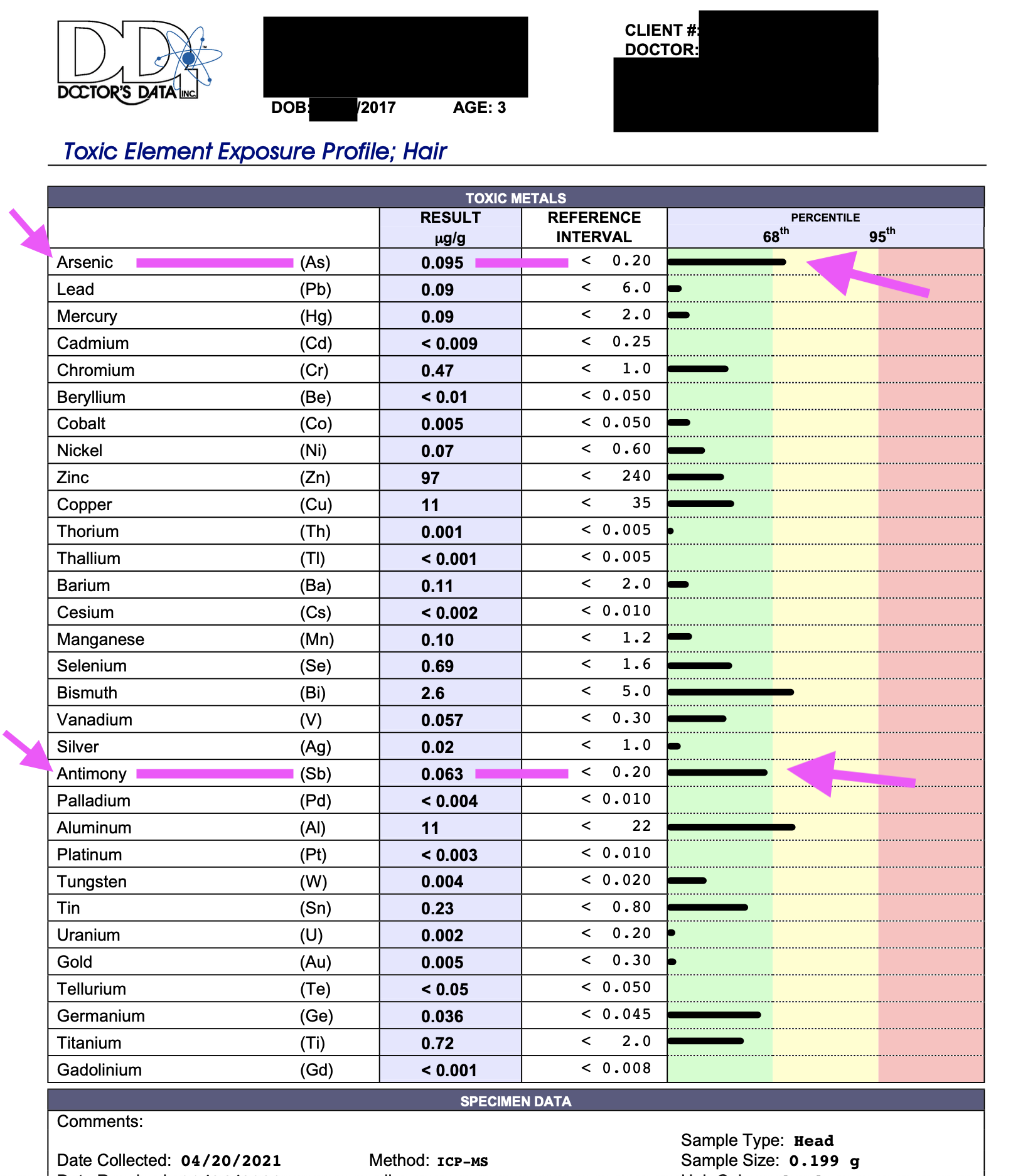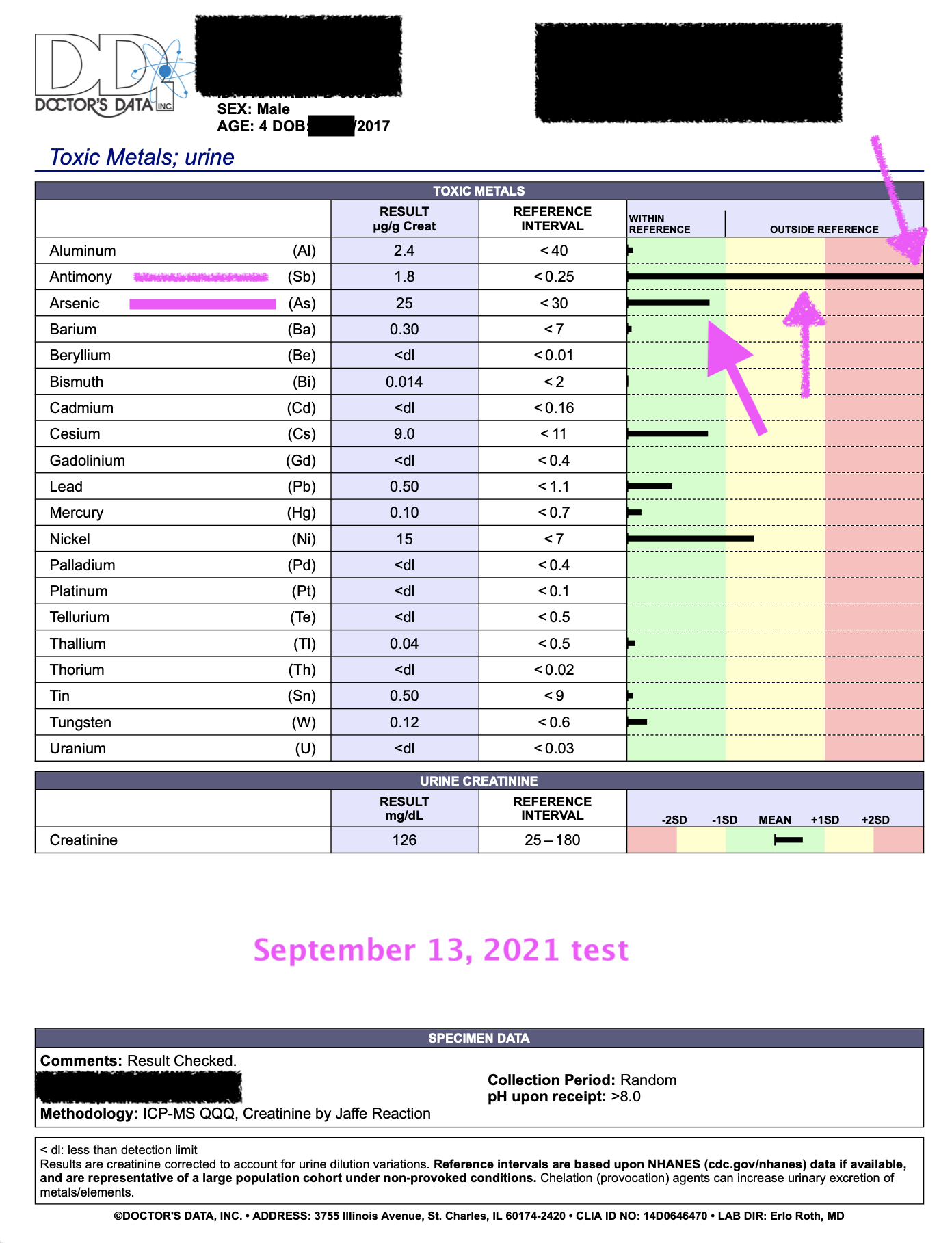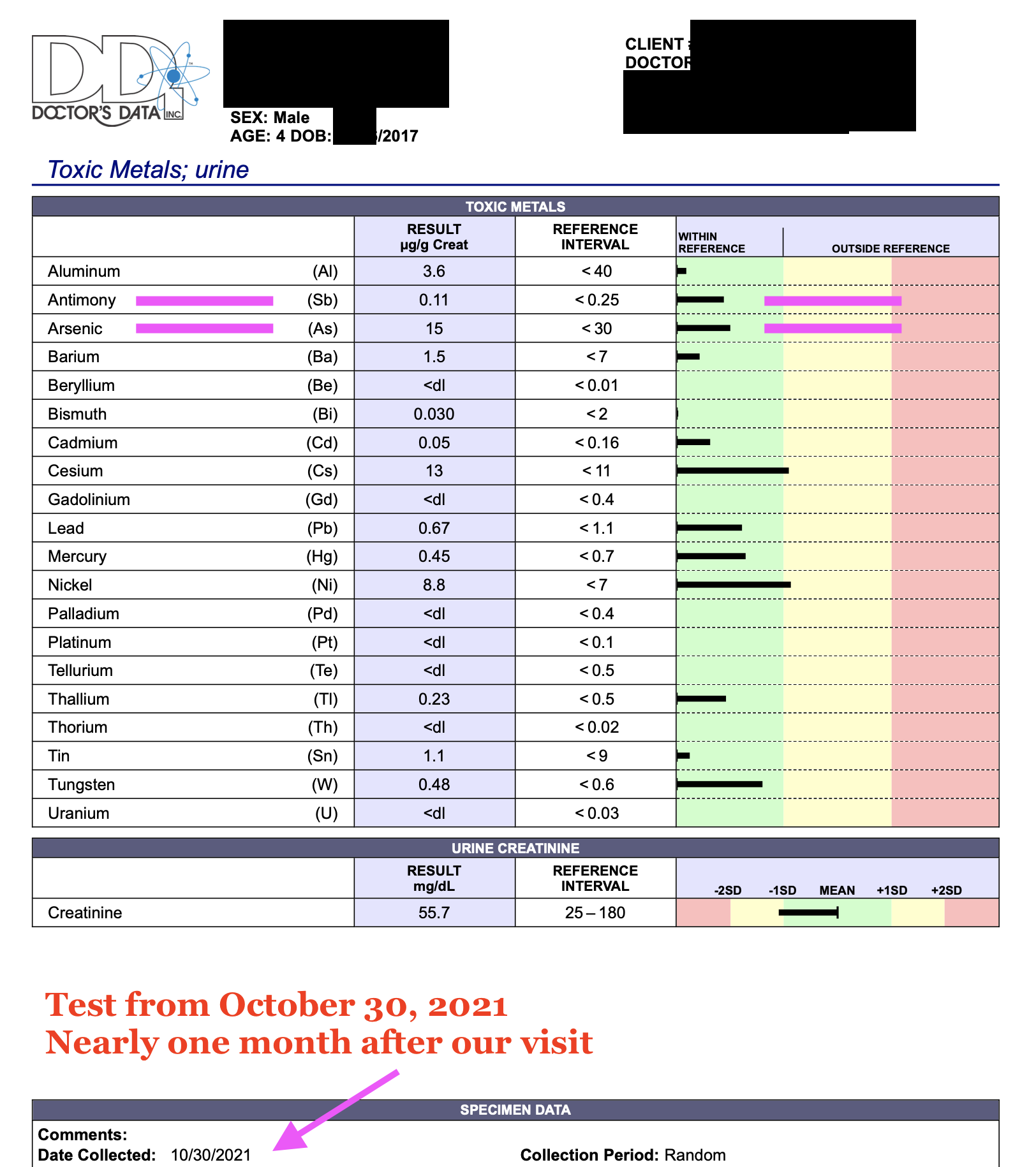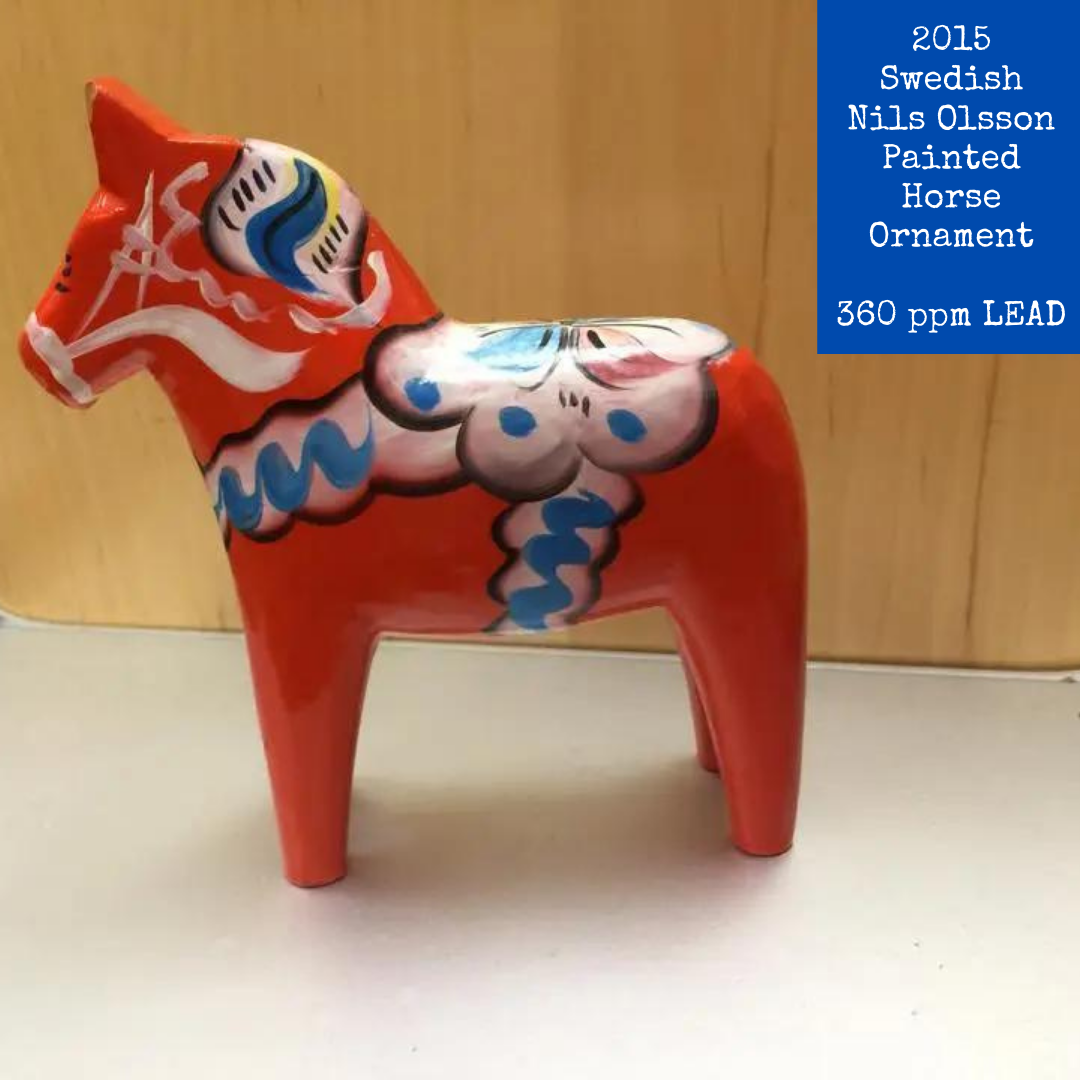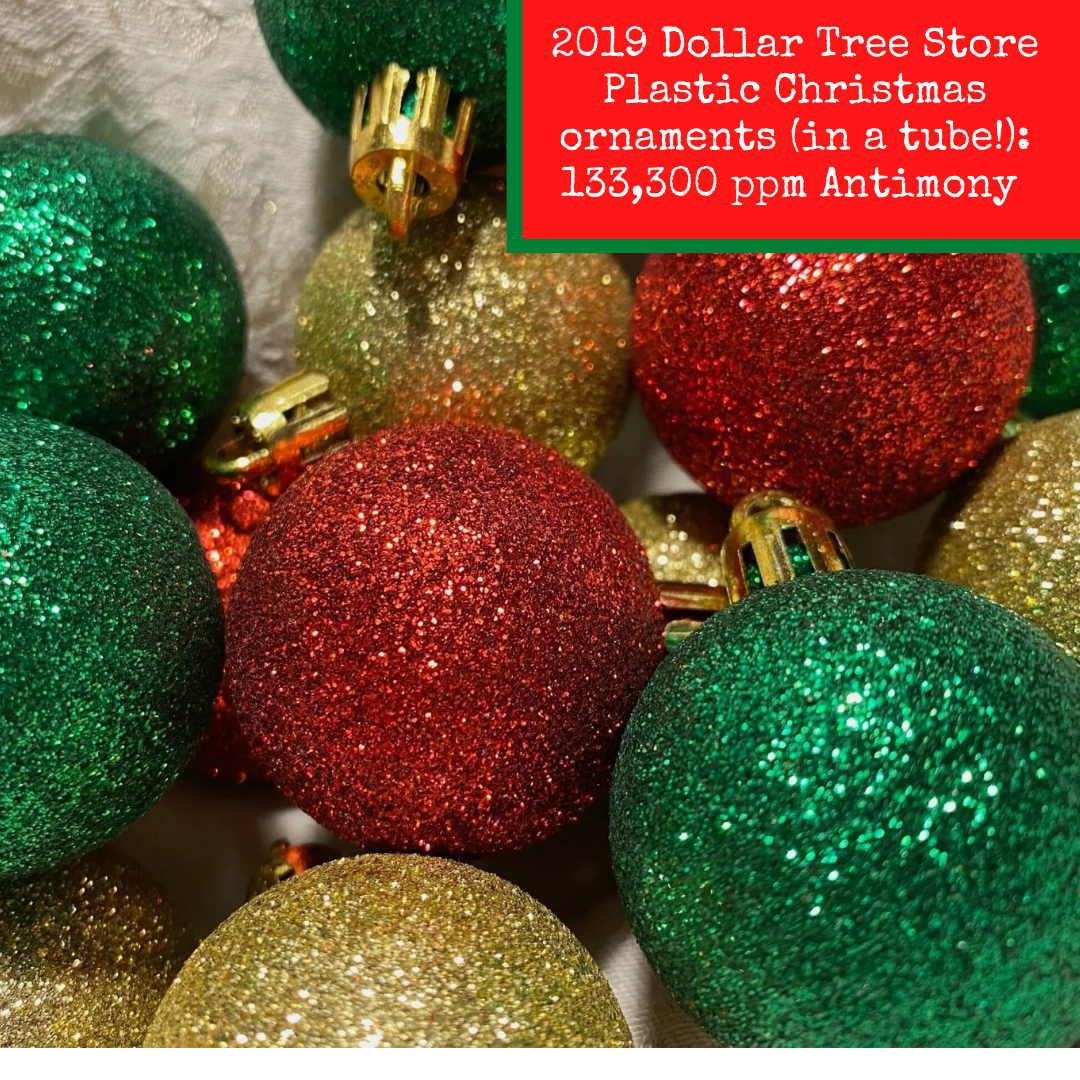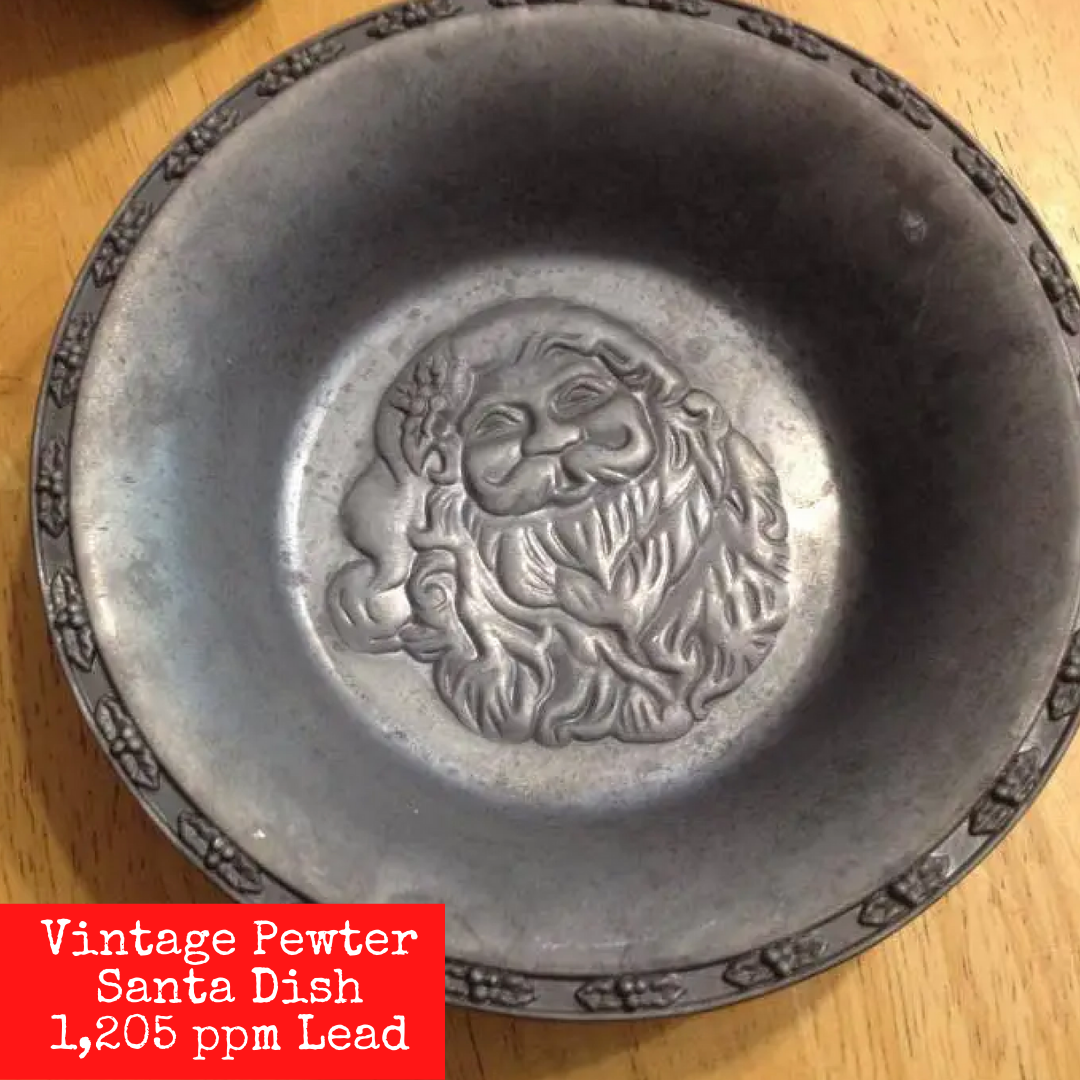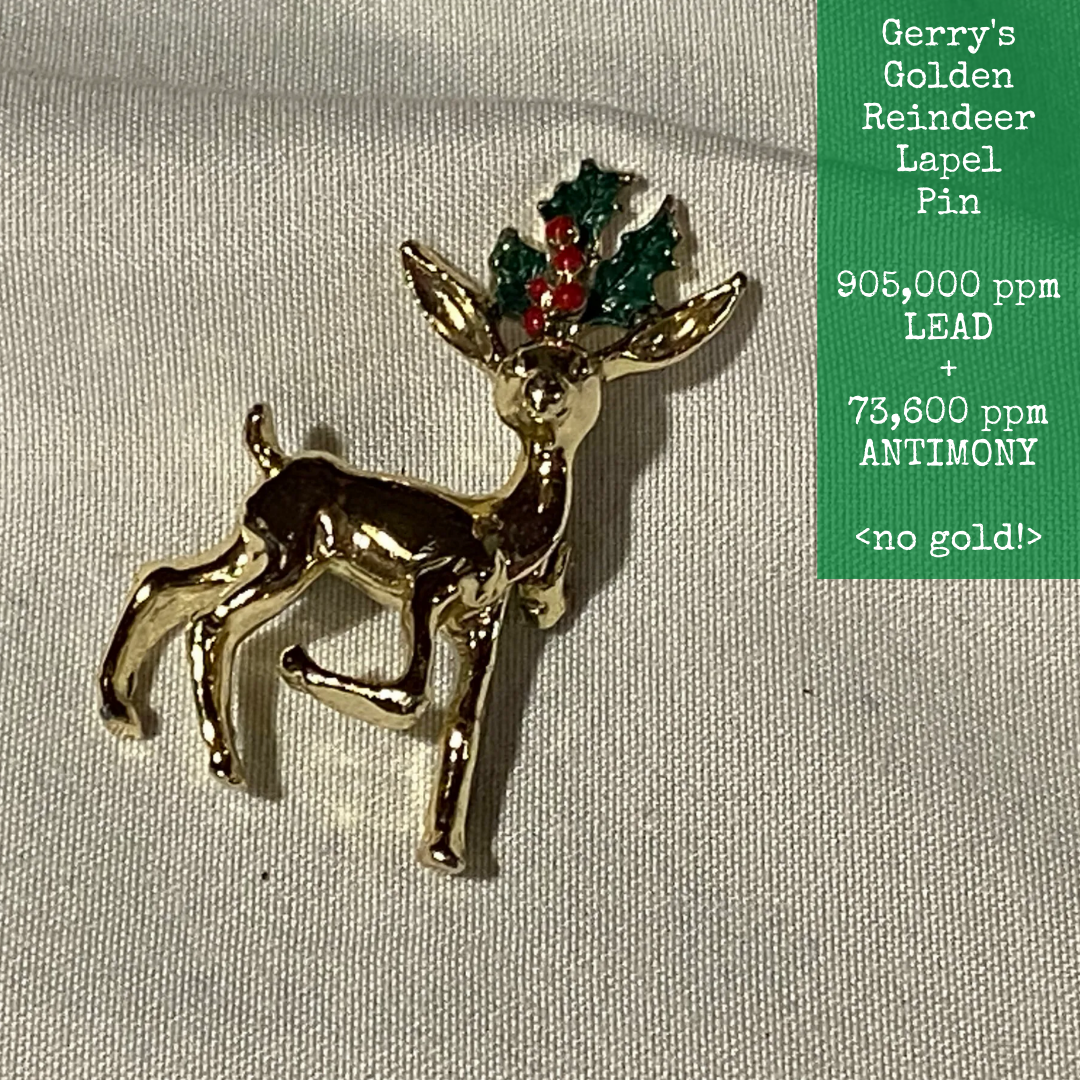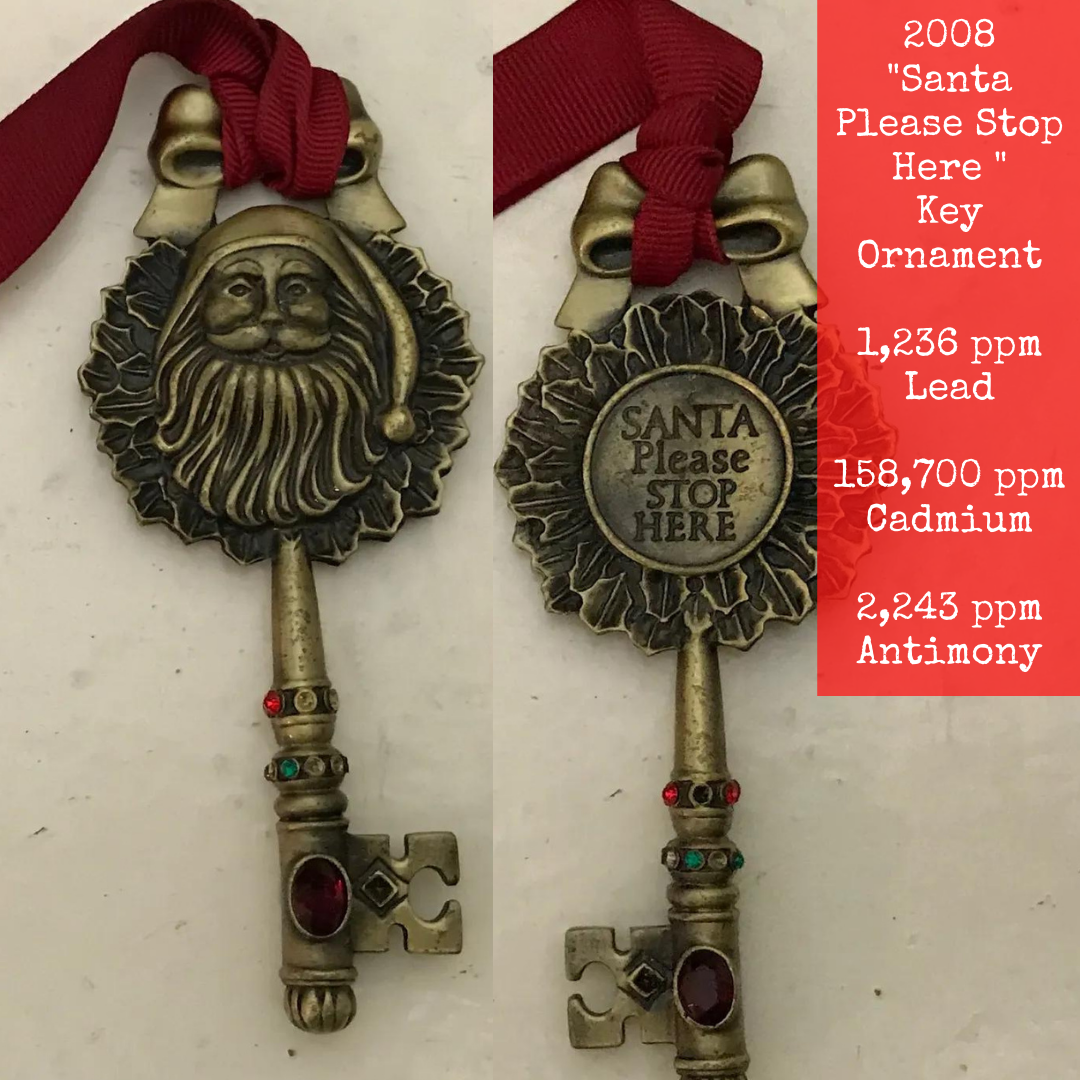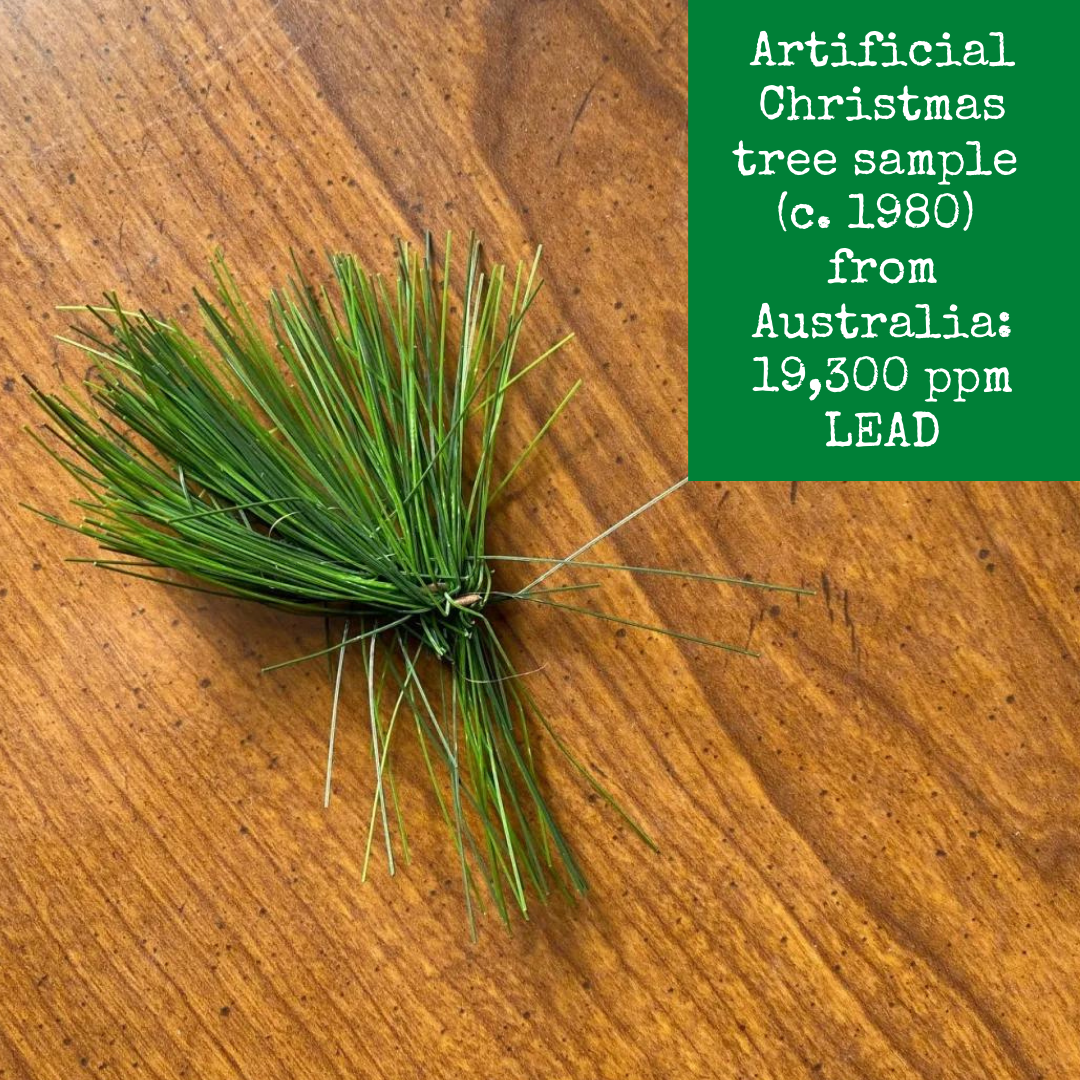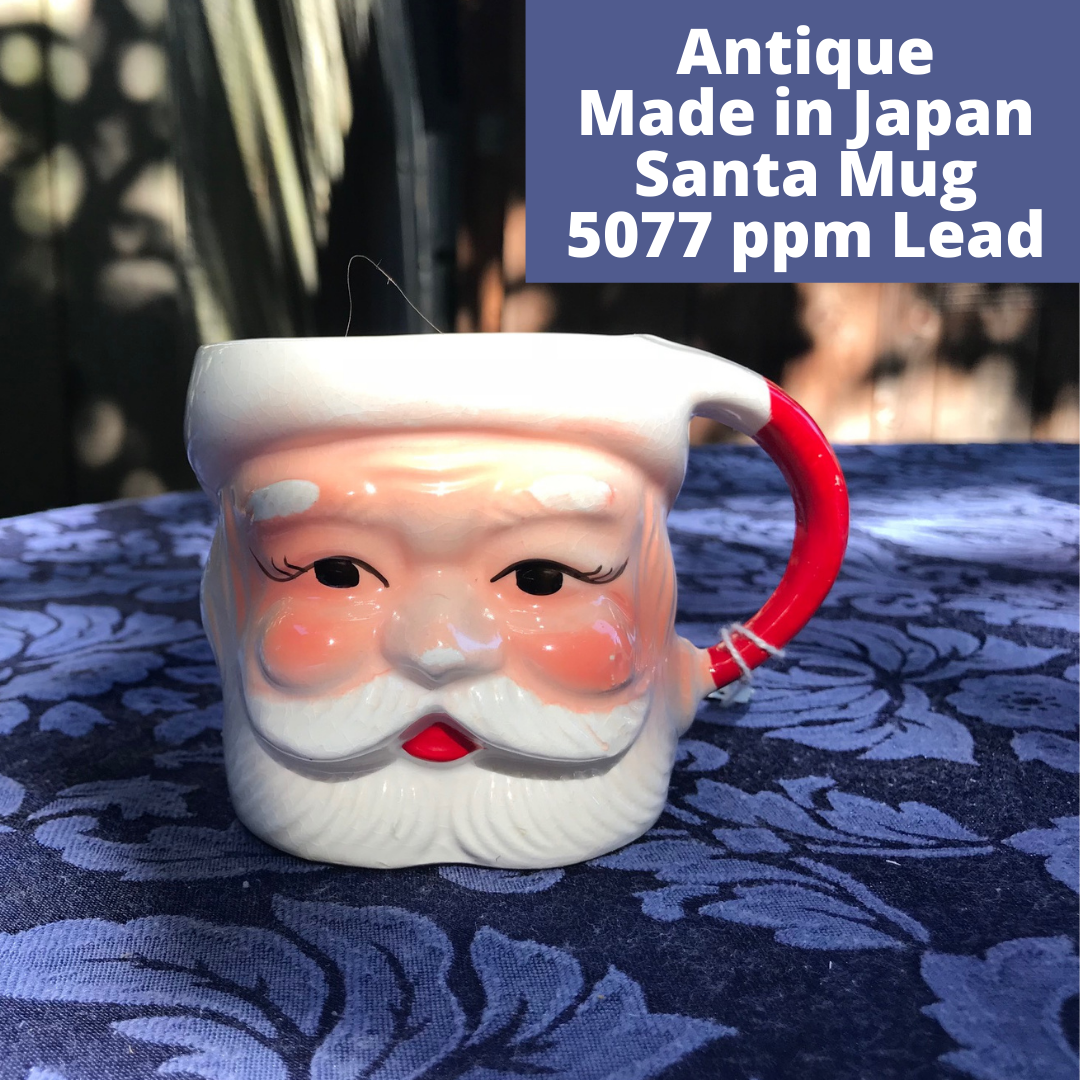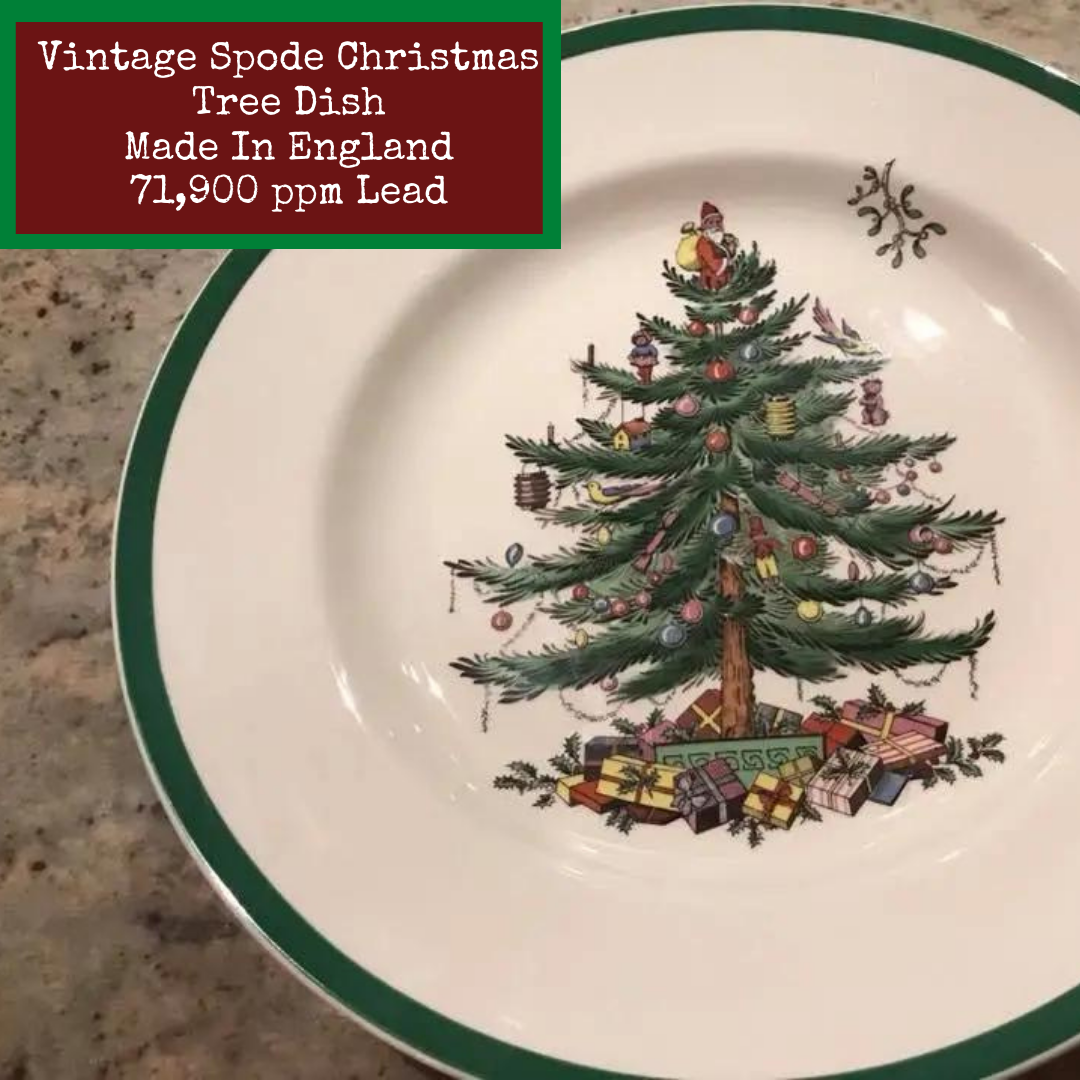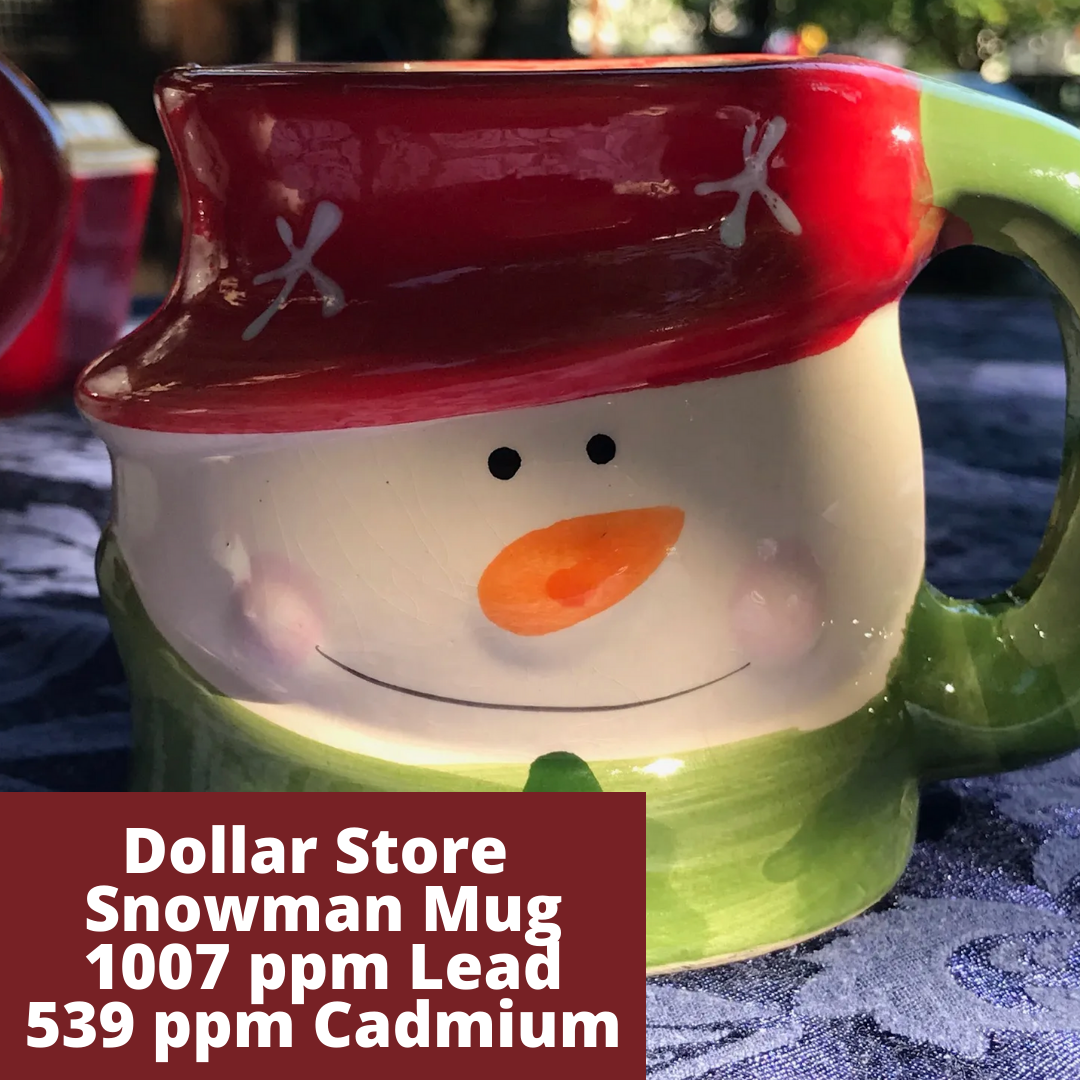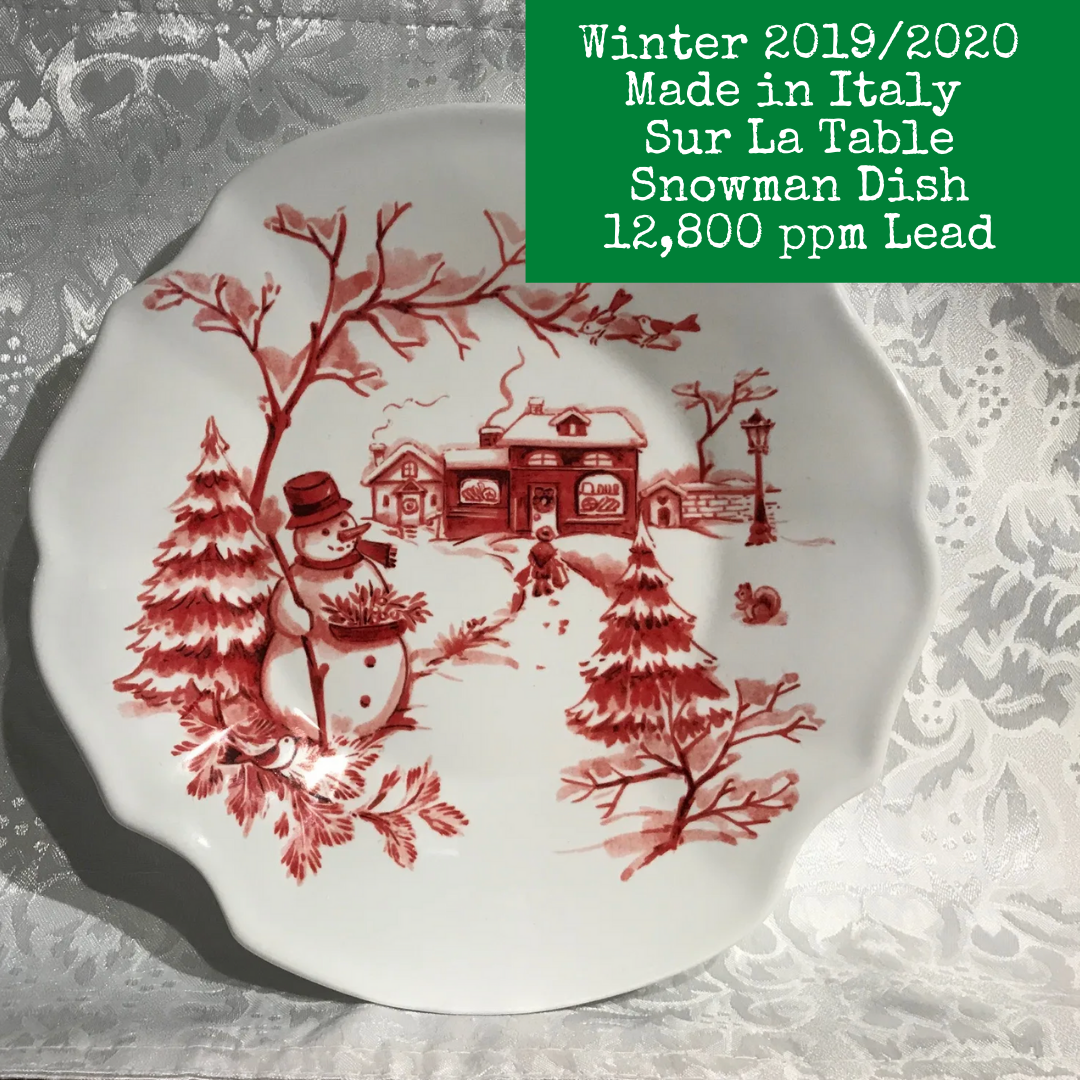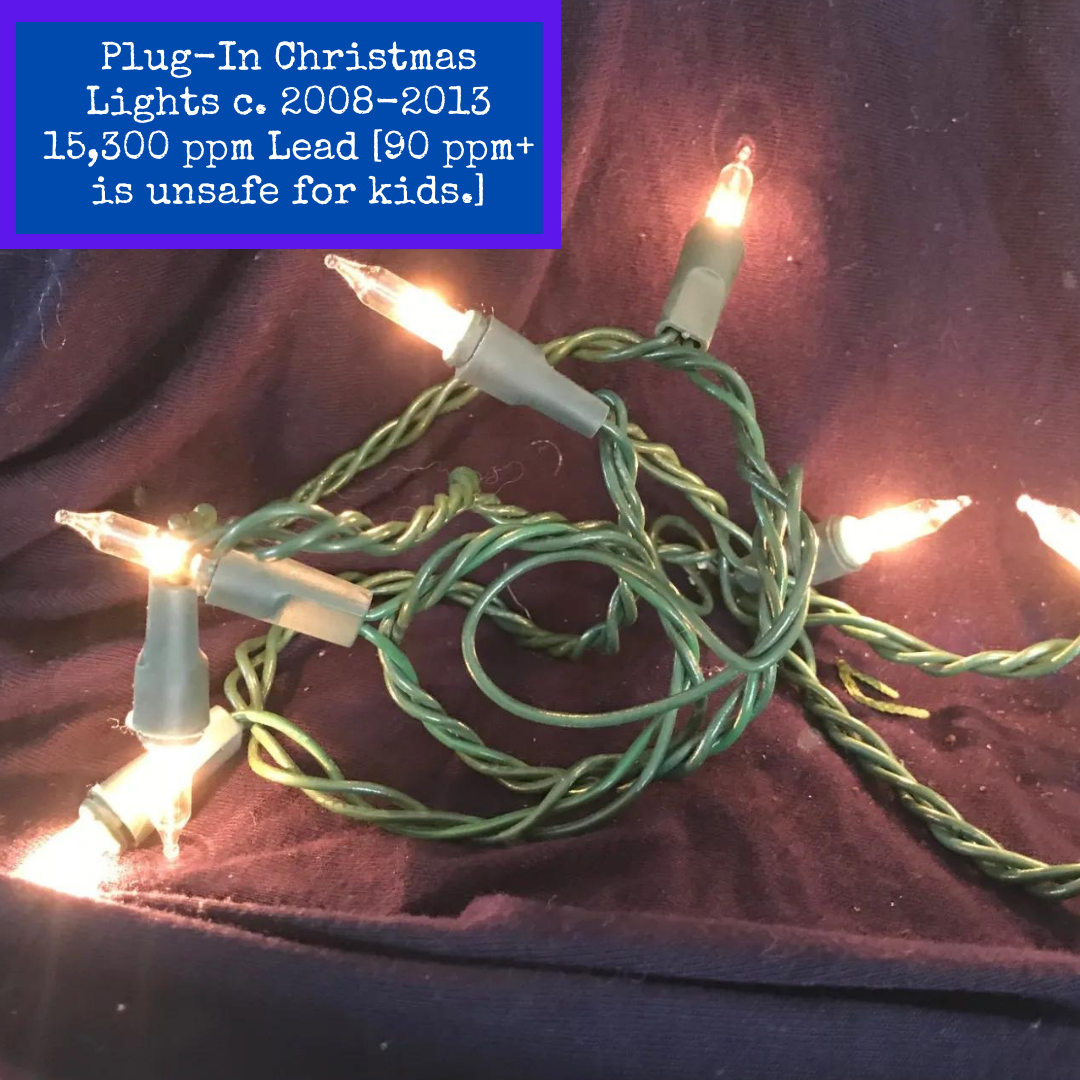Traditional green ball-style plastic Christmas ornament from Aldi (2020): 44,400 ppm ARSENIC! (NOT safe for children!)
For those new to this website:
Tamara Rubin is a multiple-federal-award-winning independent advocate for childhood Lead poisoning prevention and consumer goods safety, and a documentary filmmaker. She is also a mother of Lead-poisoned children (two of her sons were acutely Lead-poisoned in 2005). Since 2009, Tamara has been using XRF technology (a scientific method used by the U.S. Consumer Product Safety Commission) to test consumer goods for toxicants (specifically heavy metals — including Lead, Cadmium, Mercury, Antimony, and Arsenic). Tamara’s work was featured in Consumer Reports Magazine in February 2023 (March 2023 print edition).
This is an ad-free article.
Published: November 17, 2021
How did you find this ornament, Tamara?
The green plastic Christmas ornament pictured on this page (purchased at Aldi in 2020, as part of a miniature Christmas tree decorative set) was owned and cherished (touched almost daily!) by a little boy who had recently tested positive for Arsenic and Antimony.
The young boy (he is four years old now, but was just three when he received this Christmas tree as decor for his room) has developmental delays, Sensory Processing Disorder, and an Autism diagnosis. The parents are on a path to identify and eliminate all potential contributing sources to his health impairments.
Mama shared this with me when I asked for a description of their concerns for their child to include in this article:
“He has an Autism diagnosis, and the sensory differences that come with it. He is also globally developmentally delayed. First sign was speech delay, then social, then fine/gross motor and adaptive skills. [However] he is very socially engaged and interested and is not thought to be intellectually disabled.”
Given the well-established links between heavy metal exposure (including Lead) and developmental disabilities (if you have questions about this, please watch my documentary film MisLEAD: America’s Secret Epidemic), these parents began testing their child monthly for metals and then began searching for the source of the metals that their child had tested positive for. In their search, they found out about my work testing consumer goods for toxicants. In October, they had me come to their home for a consultation to try to determine potential heavy metal exposure sources for their child.
This tabletop Christmas tree was in his bedroom, on his dresser (our visit was in October 2021 and the tree had been up since the previous Christmas holiday season — 2020). During our visit, the child’s parents chose to donate this green ornament (and another red one, which I will publish the test results for, shortly) to my “Museum of Toxic Consumer Goods” collection so I could do some more extensive testing and write up the details in this article. (That way others might benefit from this information, too.)
But did this ornament actually poison a child?
While we cannot know for sure — and frankly, it would be nearly impossible to definitively determine — if the boy’s owning and frequent handling of this particular item might have contributed to his heavy metal exposure, best practices in a situation like this dictate removing everything that tests positive for any significant amount of the metals of concern. In this case, it means removing Arsenic and Antimony from the boy’s room, home, and environment.
To Note: 44,000+ ppm is an extremely high level of Arsenic to find in a consumer good — and Arsenic is rarely found at that level in any modern consumer product, so this seemingly innocuous ornament was especially concerning.
Below the image (of the boy’s hair test results from April of 2021 — from before my visit with the family) are the full XRF test results for the green plastic ornament pictured, and below that, the greater concern (about toxicants found in most holiday decorations) is discussed in detail. (Click the image of his test results below if you would like to see it full size.) To read more about the concern for the relevance of hair and urine testing, click this link.
Shortly after publishing this piece, in a text exchange with this boy’s mama, she sent me the following message:
“You know what’s interesting — the Arsenic has been consistent since we started the urine metals tests. I just looked through a bunch of them. But the most recent one, after the stupid ornaments were gone, it’s about half.”
Below is the boy’s urine test from September 2021
This test shows Arsenic levels consistent with the hair test from April 2021 (the test above) using a different testing methodology (urine testing vs. hair testing). The family also shared other urine tests showing Arsenic in a similar range. I will be discussing the boy’s Antimony spike (shown in the test below) in a separate piece (to be published shortly). The Arsenic level in this test is 25.
Here’s his most recent urine test (from October 30, 2021)
The test below shows that the boy’s Arsenic level dropped from 25 to 15 (using the urine testing methodology again) in the month since we removed this item from his room (removing the ritual of touching the ornament before bedtime from his daily routine).
Reading #1) The green part of the ornament
60-second reading
- Lead (Pb): 36 +/- 15 ppm
- Cadmium (Cd): 50 +/- 6 ppm
- Mercury (Hg): non-detect
- Bromine (Br): 19,700 +/- 200 ppm
- Chromium (Cr): 440 +/- 26 ppm
- Vanadium (V): 647 +/- 57 ppm
- Iron (Fe): 205 +/- 15 ppm
- Nickel (Ni): 53 +/- 8 ppm
- Copper (Cu): 109 +/- 8 ppm
- Zinc (Zn): 212 +/- 8 ppm
- Arsenic (As): 44,400 +/- 400 ppm
- Titanium (Ti): 1,919 +/- 98 ppm
- Tin (Sn): 55 +/- 9 ppm
- Antimony (Sb): 4,307 +/- 54 ppm
- No other metals were detected in consumer goods mode.
Reading #2) The golden top of the ornament
60-second reading
- Lead (Pb): non-detect
- Cadmium (Cd): 14 +/- 4 ppm
- Mercury (Hg): non-detect
- Bromine (Br): 1,578 +/- 14 ppm
- Chromium (Cr): 47 +/- 18 ppm
- Iron (Fe): 211 +/- 12 ppm
- Copper (Cu): 16 +/- 4 ppm
- Zinc (Zn): 58 +/- 4 ppm
- Arsenic (As): 5,805 +/- 33 ppm
- Titanium (Ti): 2,130 +/- 104 ppm
- Tin (Sn): 34 +/- 7 ppm
- Antimony (Sb): 2,131 +/- 20 ppm
- Barium (Ba): 155 +/- 41 ppm
- No other metals were detected in consumer goods mode.
Main Takeaway:
“Christmas” does not equal
“intended for use by kids.”
The most important thing to remember when decorating your home for the holidays is that most Christmas decor (and other holiday decor, too) is — from a manufacturing and regulatory perspective — classified as “not intended for use by children.” (!) This is true for both vintage and new items! This means they are exempt from virtually all of the regulatory protections that limit toxicants in items manufactured/marketed explicitly as “intended for use by children.”
Christmas items are not toys
While many Christmas items may LOOK like toys (or may look like something a child would want to play with — and are therefore very attractive to children) they are absolutely NOT toys (from a safety or regulatory oversight perspective). Below are seven (7) numbered points with broad categories of items that you should at least have a healthy (appropriate) suspicion of (assume they are likely to be unsafe for children in the absence of appropriate independent comprehensive testing). Continue reading below each of the images.
1. Painted items: Many Christmas decor items (including ornaments — especially wood, glass, or metal ornaments, both antique or new — but also some plastic ornaments as demonstrated by this article) are likely to test positive for some heavy metals and may even be painted with Lead-containing paint, and/or (if they are red) with high–Cadmium-content paint or glaze. Cadmium is a known carcinogen and you can read more about it at this link.
2. Plastic Items: Plastics — including many ornaments that go on the tree (and plastic decorative ball ornaments) or other plastic electric items (specifically items that plug-in — like a pre-lit artificial Christmas tree) are likely to either be high in Lead (which causes brain damage in young children) or to have high levels of Antimony (which is known to cause cancer in rats), as one or both have been applied as flame retardants to these types of products. This is of course in addition to the health concern over high levels of Phthalates in plastic items and the concern for the presence of Arsenic — again, as evidenced by the green ball ornament we focus on for this piece.
3. Metal items: Pewter or other solid metal ornaments can be made with unsafe levels of Lead (which is also, of course, the case with most heavy, shiny, yellow Leaded Brass), and/or unsafe levels of Antimony or even extremely high levels of Cadmium. Vintage or antique pewter items are generally very high-Lead. Newer pewter items tend to be high in Antimony. “Functional ” items made of pewter (like decorative serving trays or tea sets) should NEVER be considered safe for food use, BTW! Note: Most pewter that is marked “Lead-free” still actually has unsafe levels of Lead — even if Lead is no longer a “main” constituent in the substrate of the item! (And in most cases, the bulk of the “missing” Lead in so-called “Lead-free” pewter has been replaced with Antimony, which can be just as toxic — if not more so!)
4. Artificial Christmas trees: Both modern and vintage artificial Christmas trees are generally either high in Lead or high in Antimony, as well. The “California Prop 65” warnings that come with many of these items are NOT “simply a ‘CYA’ warning, included by the manufacturer just to be safe!” They are legitimate legally-mandated warning labels — because these products contain toxic chemicals (often applied or integrated into the product to comply with flammability regulations*). Older artificial Christmas trees are more likely to have high levels of Lead and newer artificial trees are more likely to have high levels of Antimony. Artificial Christmas trees can also be quite hazardous in that the plastic deteriorates and can create Antimony-contaminated or Lead-contaminated dust in your home over time.
*To learn about the surprising history of these controversial requirements for flame retardants, check out the documentary, “Toxic Hot Seat,” by the late Jamie Redford.
5. Vintage Ceramics: Vintage ceramics designed for the holidays (especially vintage Christmas mugs) are not generally safe for food use and should NOT be given to children (e.g. with hot cocoa) — unless they have specifically been tested and confirmed to be both Lead-free and non-leaching (of any toxic chemicals).
6. New Ceramics: New holiday ceramics can also be high-Lead (although they may or may not be leaching — yet — when they are still new. Read more about that here. In fact, many new Christmas ceramic items (including decorative trays and bowls and platters) actually may never have been leach-tested at all — because they are arguably considered “decor” and not “functional food-use items” (even though the adoption of these items for food use may, in reality, be a universally intuitive and logical outcome that was either intentional on the part of the manufacturer/ marketer/ retailer — or at the very least should obviously have been expected).
7. Twinkly lights: Plug-in holiday string lights generally have high levels of either Lead or Antimony in the cords and bulb holders. This goes for both vintage/ older light strings and new ones — as well as plug-in trees and other plug-in holiday decor items. Based on the testing I have done, older light strings are more likely to have unsafe levels of Lead, and newer light strings are more likely to have high (potentially unsafe) levels of Antimony.
As a result, most Christmas items (including brand-new Christmas china and ornaments) can — LEGALLY — have extremely unsafe levels of XRF-detectable heavy metals including (but not limited to) Arsenic, Lead, Cadmium, Antimony, and even Mercury! Please read my full overview article on the subject (which also includes tips for making safer choices for your family) at this link. Thank you!
Some additional Christmas-related info for you to explore here on the Lead Safe Mama website:
- Christmas: https://tamararubin.com/category/christmas/
- Artificial Christmas Trees: https://tamararubin.com/category/artificial-christmas-tree/
- Christmas Ornaments: https://tamararubin.com/category/christmas-ornaments/
- Christmas Mugs: https://tamararubin.com/category/christmas-mugs/
- Christmas China: https://tamararubin.com/category/christmas-china/
- Christmas Decorations: https://tamararubin.com/category/christmas-decoration/
- Santa: https://tamararubin.com/category/santa/
Thank you for reading and sharing these articles. Please explore the links above for more information about concerns around Christmas-centric consumer goods.
Tamara Elise Rubin
#LeadSafeMama
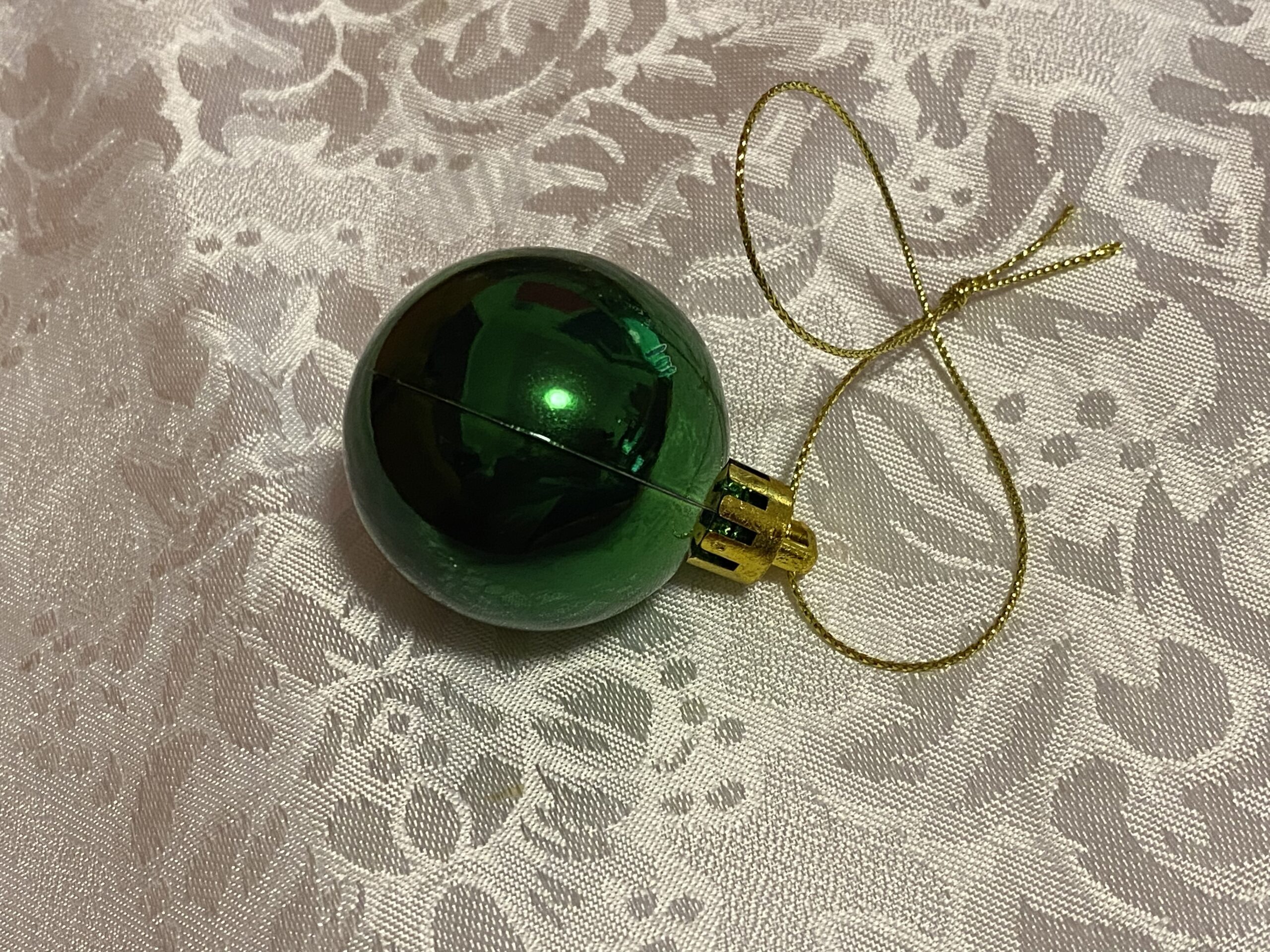
Never Miss an Important Article Again!
Join our Email List








